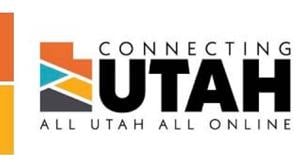
LOGAN – The clock is tricking toward a May 28 deadline for Utah to claim more than $300 million in federal money to fund internet connectivity throughout the state.
The catch is that state officials have to prove that they really need those funds by having residents across Utah run an online Internet speed test to identify specific locations that may be not served or are underserved by current Internet providers.
“The state knows about places like Amalga, Cornish, Trenton, Paradise, Avon and Benson,” according to Paul Davis, an outreach specialist at the Bear River Association of Governments.
“The places that are harder to identify,” he says, “are areas where you can supposedly get high-speed connectivity, but really can’t.”
The Infrastructure Investment and Jobs Act (IIJA) – better known as Bipartisan Infrastructure Law (BIL) — was signed into law by President Joe Biden on November 15, 2021.
The law authorizes $1.2 trillion for transportation and infrastructure spending with $550 billion of that figure going toward “new” investments and programs, including nationwide Internet connectivity improvements
Utah’s slice of that federal bonanza is potentially a $317 million allocation to improve Internet connectivity. That sounds great, but federal officials have stipulated a number of hoops that state residents must jump through to qualify for that funding this year.
Under the state’s Broadband, Equity, Access, and Deployment (BEAD) program, Davis explains, priority is being given to unserved locations – those with no Internet access or download speeds of 25/3 megabytes per second – and underserved locations, with download speeds 100/20 megabytes per second.
To identify those areas in Cache County, BRAG officials are asking local residents to complete the online Utah Broadband Survey & Speed Test at https://portal.horrocks.com/sites/utahbroadbandsurvey/
Davis acknowledges that may sound easy, but isn’t really.
To meet that challenge, residents must complete three speed tests on different days. Those tests are also recommended to be completed with residents’ computers plugged directly into a modem or router that is connected to the Internet to obtain accurate connectivity speeds.
Despite those obstacles, BRAG officials are urging all Cache County residents to complete those speed tests by the May 28 deadline.
Utah has developed a five-year action plan that outlines the strategic priorities for statewide broadband deployment as well as adoption and collaboration between neighboring states, territories, communities and shareholders.
The state’s Digital Access program will also examine other barriers to connectivity relating to affordability, digital skills fluency, device distribution and more.

